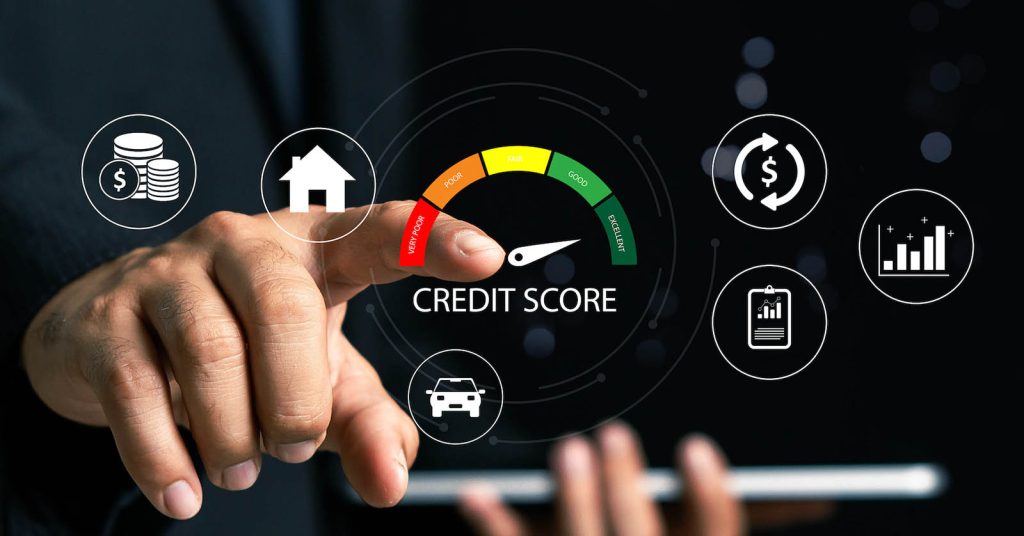A “good” credit score isn’t a guess — it’s defined by the scoring models lenders actually use. On the dominant FICO® scale (300–850), 670–739 is considered “Good,” 740–799 “Very Good,” and 800+ “Exceptional.” These tiers matter because they change real prices: mortgages use credit-score buckets in their fee/rate grid (LLPAs), auto loan APRs climb quickly as scores fall, and — in most states — insurers use credit-based scores to help set premiums. As of late 2024/2025, the average U.S. FICO Score is about 715, a slight dip from last year as delinquencies and card utilization rose. If you’re near the next tier, a few targeted moves can reduce borrowing costs by hundreds or even thousands over a loan’s life. Below, you’ll find the ranges lenders look at, how those numbers translate into dollars, and a 30/60/90-day plan to lift your score — without gimmicks.
Key Takeaways
- “Good” on FICO = 670–739. 740–799 is Very Good; 800+ Exceptional. Many best offers aim for 740+.
- Average score ≈ 715 (2024–2025). A small decline vs. last year as utilization and delinquencies rose.
- Scores change real prices. Mortgages price by score/LTV (LLPAs); auto APRs vary widely by tier; most states allow credit-based insurance scores.
- Fastest levers: no new late payments and lower revolving utilization (the two largest FICO factors).
- BNPL is more visible in 2025. Apple Pay Later appears on Experian; Affirm reports all pay-over-time loans from Apr 1, 2025; collections can still hurt scores.
Credit Score Ranges (What Lenders Typically Call “Good”)
U.S. consumer lending generally uses a 300–850 scale. For FICO®, ranges are commonly described as: Poor (below 580), Fair (580–669), Good (670–739), Very Good (740–799), and Exceptional (800–850). VantageScore uses the same numeric span with similar labels, though each lender can set its own cutoffs. Practically, premium credit cards and the best advertised APRs tend to cluster in the Very Good–Exceptional tiers, while approvals in the Good band are common but may carry higher APRs or lower limits. Two applicants with the same score can get different results if one has thin history, high utilization, or recent delinquencies — lenders evaluate the whole file, not just a number. Your strategy: aim for the next tier rather than perfection, because each rung up generally improves pricing and approval odds. Keep older fee-free accounts open (length helps) and avoid unnecessary applications ahead of a big purchase.
| FICO® Range | Label | What it usually means |
|---|---|---|
| < 580 | Poor | Very limited approvals; highest APRs |
| 580–669 | Fair | Possible approvals, higher costs and smaller limits |
| 670–739 | Good | Near/above average; many lenders consider this acceptable risk |
| 740–799 | Very Good | Stronger approvals; better mortgage/auto/card pricing |
| 800–850 | Exceptional | Top tier pricing, highest limits, lowest risk adds |
Source: myFICO — FICO® Score ranges and definitions.
Why Your Score Matters in Dollars (Mortgages, Auto, Insurance)
Scores affect what you pay. On conventional mortgages, Fannie Mae’s Loan-Level Price Adjustment (LLPA) grid varies by credit-score bucket and LTV; moving up just one bucket (e.g., 660–679 to 680–699) can change fees and your rate quote. On auto loans, Experian’s 2025 data shows average rates around 6.73% for new and 11.87% for used vehicles overall — borrowers in lower tiers pay substantially more. Finally, in most states, credit-based insurance scores influence auto and homeowners premiums, though state rules vary and often limit how credit can be used. Actionably: shop large loans with your current tier in mind, and if you’re close to a higher tier, take 30–60 days to reduce utilization and clean up errors — the savings can be meaningful.
What Drives Your Score (and the Fastest Levers to Pull)
Payment history (~35%): prevent new late payments by enabling autopay (at least the statement minimum) and bringing any past-due account current.
Amounts owed/credit utilization (~30%): aim to report under ~30% across cards; lower is better if you’re trying to jump a tier. Paying before the statement closes (“mid-cycle”) can reduce reported balances within days.
Length of history (~15%): avoid closing your oldest fee-free cards.
New credit (~10%): batch necessary applications in a short window and avoid extras before a mortgage/auto.
Mix (~10%): you don’t need every loan type; build mix only after the big levers are solid. If your file has errors, dispute with each bureau — clean data can move scores quickly.
BNPL in 2025: Helpful Tool — Now With More Visibility
Treat Buy Now, Pay Later like any other installment loan. In 2025, BNPL is more visible on U.S. credit files: Apple Pay Later loans appear on Experian credit reports with a BNPL designation, and Affirm began reporting all pay-over-time loans to Experian on April 1, 2025. TransUnion is enabling BNPL/point-of-sale data inside the core credit file with initial “score shielding,” so many current models won’t count it — yet. Practical takeaway: even if a BNPL loan doesn’t directly affect today’s score, collections from missed BNPL payments can hurt your credit like any other derogatory. Keep BNPL to one plan at a time, calendar every due date, and avoid using it for consumables or subscriptions where overspending is easy.
30/60/90-Day Score Plan (From Any Starting Point)
Days 1–30: turn on autopay for all accounts; bring past-due items current; make mid-cycle payments on high-utilization cards so lower balances report at statement cut.
Days 31–60: hold spending under plan; if consolidating, use a true 0% intro balance transfer with a calendar to hit $0 before promo end; pull fresh reports and confirm utilization reflects your paydowns.
Days 61–90: if you’re near a key tier and plan to apply, avoid new hard inquiries; optionally add positive data where accepted (e.g., on-time rent). For mortgages, ask about rapid rescore once updated balances hit. For auto/insurance, shop several quotes; thresholds vary by lender/insurer and state law. The through-line: on-time payments + lower utilization + time on task move the needle fastest.
Frequently Asked Questions (FAQs)
What is considered a “good” credit score?
On FICO’s 300–850 scale, 670–739 is “Good,” 740–799 “Very Good,” and 800+ “Exceptional.” Many best-rate mortgage/auto/card offers show up at 740+.
What’s the current average U.S. score?
Roughly 715 (2024–2025), per Experian’s latest consumer credit review.
Does my score affect insurance?
In most states, yes — insurers use credit-based insurance scores in underwriting and rating, though states limit how credit can be used. Check your state’s rules.
Which factors move FICO fastest?
Avoid new late payments and lower revolving utilization — together they’re ~65% of FICO weighting.
Sources
- myFICO — FICO® Score ranges & definitions (range labels and weights).
- Experian — 2024 Consumer Credit Review (average U.S. score ≈ 715).
- Fannie Mae — LLPA Matrix (mortgage pricing varies by score/LTV).
- Experian — Auto loan rates (Q1/Q2 2025 averages) (6.73% new; 11.87% used).
- NAIC — Credit-based insurance scores (how insurers use credit; state variation).
- Experian — Apple Pay Later appears on credit reports (BNPL visibility).
- Affirm — Reporting all pay-over-time to Experian (Apr 1, 2025).
- TransUnion — BNPL data in the core credit file (initial score shielding).









